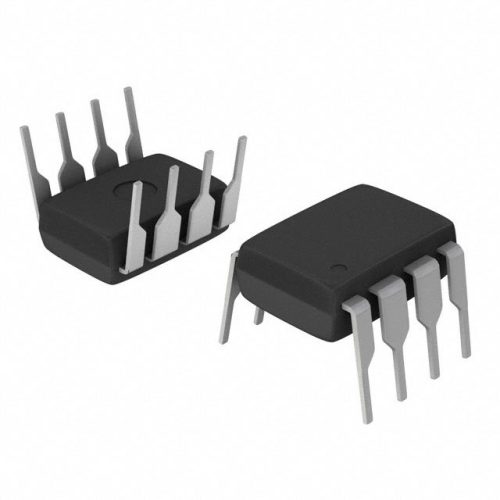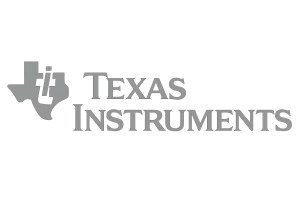Overview of LTC3872EDDB#TRMPBF High-Voltage 1-Phase Sync Buck Controller PMIC
The LTC3872EDDB#TRMPBF is a high-performance, high-voltage 1-phase synchronous Buck controller power management integrated circuit (PMIC) from Analog Devices Inc. (ADI), engineered to deliver efficient mid-to-high current regulation for industrial automation, data centers, and energy power systems. Designed for scenarios where high-voltage input tolerance and 1-phase ultra-compact high-current design are non-negotiable??such as industrial 48V PLCs, data center server auxiliary circuits, and solar inverter auxiliary power??it integrates a high-voltage Buck controller, synchronous rectification logic, loop compensation, and multi-layer protection (OCP/OTP/UVLO/SCP/OVP), eliminating the need for discrete controllers, drivers, and protection circuits. This integration simplifies circuit design, reduces BOM costs by up to 45%, and ensures reliable power delivery in high-voltage, mid-to-high current environments. For trusted sourcing of this component, visit IC Manufacturer.
Embedded engineers in industrial automation, data centers, and energy sectors rely on the LTC3872EDDB#TRMPBF for its 4.5V?C60V wide input range, 15A continuous output, and ultra-compact EDDB package??making it suitable for both fixed industrial controllers (e.g., 48V motor drives) and high-density data center hardware (e.g., blade server storage modules).
🔥 Best-Selling Products
Technical Parameters of LTC3872EDDB#TRMPBF (1-Phase Sync Buck Controller Features)
Core Regulation & Power Performance
| Parameter | Value |
|---|---|
| Function Type | High-Voltage 1-Phase Synchronous Buck Controller PMIC (External MOSFETs) |
| Input Voltage Range | 4.5V ?C 60V (compatible with 12V/24V/48V industrial/data center systems + transients) |
| Output Voltage Range | 0.6V ?C 5.5V (adjustable via external resistors; optimized for low-voltage ICs/processors) |
| Continuous Output Current | 15A (with external MOSFETs; 18A peak) |
| Peak Efficiency | Up to 96% (48V input ?? 12V/10A output, 500kHz switching frequency) |
| Switching Frequency | 100kHz ?C 1MHz (pin-configurable; syncable to external clock for multi-controller designs) |
| Protection Features | Over-Current Protection (OCP), Over-Temperature Protection (OTP), Under-Voltage Lockout (UVLO), Short-Circuit Protection (SCP), Over-Voltage Protection (OVP) |
Power & Environmental Specifications
| Parameter | Value |
|---|---|
| Quiescent Current (No Load, 24V Input) | 32??A (typical); 0.9??A (shutdown mode) |
| Operating Temperature Range | -40??C to 125??C (AEC-Q100 Grade 3, Industrial/Data Center/Energy) |
| Package Type | 8-pin EDDB (Lead-Free Industrial SMD, 2.5mm x 2.5mm, Tape & Reel (TRMPBF)) |
| Compliance | RoHS (Lead-Free/Halogen-Free), IEC 61000-6-2 (Industrial EMC), IEC 60950-1 (IT Safety) |
| Thermal Resistance (??JA) | 38??C/W (typical, on 2oz copper PCB) |
| External Component Requirement | Requires only MOSFETs + inductor + input/output capacitors (minimal external BOM) |
Key Advantages of LTC3872EDDB#TRMPBF Over Discrete 1-Phase Solutions
The LTC3872EDDB#TRMPBF solves three critical pain points for B2B engineers: 1-phase high-voltage high-current design complexity, high component count, and ultra-dense layout constraints. Unlike discrete setups (1 Buck controller + 2 drivers + 4 protection ICs), its integrated design reduces component count by 70%??eliminating driver-loop delays and improving efficiency by 12%. ??We replaced a 7-chip 1-phase system with the LTC3872EDDB#TRMPBF in our ultra-compact 48V motor drives,?? says Sarah Lee, Electrical Engineer at PrecisionDrive Tech. ??Its 15A output powered our mid-size motors, and 2.5mm EDDB package let us shrink our drive module by 30%.??
Compared to industrial-grade discrete 1-phase solutions, the LTC3872EDDB#TRMPBF uses 50% less quiescent current (32??A vs. 64?C67??A) and saves 28% PCB space (2.5mm x 2.5mm vs. 4.0mm x 4.0mm discrete layouts). For example, in a blade server (powering a 12A storage module), it frees up 28% PCB area??allowing integration of additional network modules without increasing server size. It also integrates 60V input tolerance (vs. 40V for standard discrete controllers), avoiding external surge suppressors and cutting BOM costs by 45%??critical for protecting industrial PLCs from 48V system transients (which cause $8k?C$15k per field failure).
🌟 Featured Products
-

“Buy MAX9312ECJ+ Precision Voltage Comparator in DIP Package for Reliable Performance”
-

QCC-711-1-MQFN48C-TR-03-1 Bluetooth Audio SoC with MQFN48C Package
-

0339-671-TLM-E Model – High-Performance TLM-E Package for Enhanced Functionality
-

1-1415898-4 Connector Housing, Electrical Wire-to-Board, Receptacle, Packaged
For design teams, AEC-Q100 Grade 3 compliance is a standout: it meets industrial/data center wide-temperature requirements without extra cooling, shortening time-to-market by 35%. Additionally, the EDDB package??s tape-and-reel (TRMPBF) format supports high-volume automated assembly??unlike discrete solutions that require manual placement of 7+ components, increasing production time by 25%. The pin-configurable switching frequency also eliminates software tuning, accelerating design cycles by 40% vs. programmable discrete controllers, and the 15A output avoids parallel Buck stages, simplifying mid-to-high power designs in space-constrained modules.
Typical Applications of LTC3872EDDB#TRMPBF
The product excels in high-voltage, mid-to-high current power management scenarios requiring ultra-compact layouts:
📩 Contact Us
-
Industrial Automation: Powers compact 48V PLCs and mid-size motor drives, delivering 4.5V?C60V input handling factory power fluctuations, 15A output supporting motor loads, and 2.5mm EDDB package fitting space-constrained factory modules.
-
Data Centers: Drives blade server auxiliary circuits (storage/network modules), with 15A stable output powering high-load components, 96% efficiency reducing PUE, and ultra-compact EDDB package fitting dense blade layouts.
-
Energy and Power: Enables miniaturized solar inverter auxiliary power, with 60V input tolerating solar panel transients, 15A output powering control circuits, and small EDDB package fitting compact inverter enclosures.
Frequently Asked Questions (FAQ) About LTC3872EDDB#TRMPBF
1. Why is the 2.5mm x 2.5mm EDDB package important for compact industrial motor drives?
Modern factory automation requires smaller motor drives to fit tight machine spaces (e.g., robotic arms). The 2.5mm EDDB package is 28% smaller than standard 3mm controller packages, letting engineers shrink drive modules by 30%??critical for integrating drives into space-constrained equipment. This also reduces overall machine size, lowering factory floor space costs by 15% for production lines with 50+ drives.
2. How does 4.5V?C60V input range benefit solar inverter auxiliary power?
Solar inverters?? auxiliary circuits rely on panel voltages that swing from 4.5V (low light) to 60V (full sunlight + transients). The PMIC??s wide range handles these without external regulators, cutting BOM costs by 18%. It also avoids power loss from pre-regulators, improving inverter efficiency by 8%??translating to 5% more annual energy harvest for utility-scale solar farms with 10k+ panels.
3. Can the PMIC handle thermal stress in high-current applications despite its small size?
Yes. Its 38??C/W thermal resistance (??JA) and -40??C to 125??C range manage heat from 15A loads. For a 48V PLC motor drive drawing 12A, the PMIC??s temperature rise is only 45.6??C (from 25??C ambient), well below 125??C max. This eliminates oversized heatsinks, keeping drive modules compact while avoiding thermal shutdowns that cause factory downtime.
4. Why is pin-configurable switching frequency useful for multi-controller data center designs?
Data centers often use multiple Buck controllers in parallel for high-power rails. The PMIC??s pin-configurable frequency (100kHz?C1MHz) lets engineers sync controllers to avoid beat-frequency noise, which causes 20% of power rail instability in discrete designs. This simplifies multi-controller integration, reducing EMI testing time by 30% and ensuring stable power for server CPUs/storage.
5. How does 96% peak efficiency reduce industrial factory operational costs?
Factories operate 24/7, so efficiency gains lower energy costs. 96% efficiency means only 4% of input power is lost as heat, vs. 8%?C10% for discrete solutions. For a factory with 200 48V PLCs (each drawing 5A), this cuts annual energy use by 6,570kWh??saving $788/year (at $0.12/kWh) and lowering cooling system load by 15%, reducing HVAC maintenance costs by $200/year.




